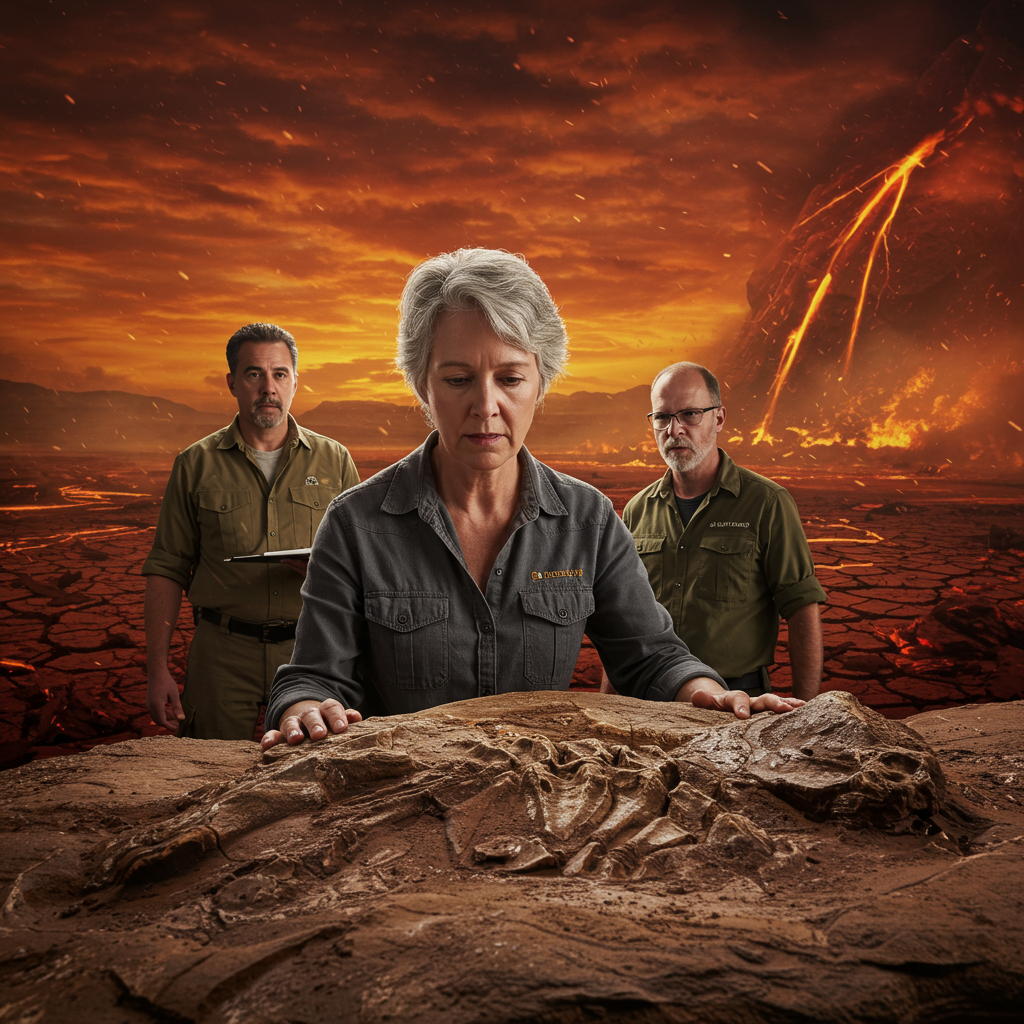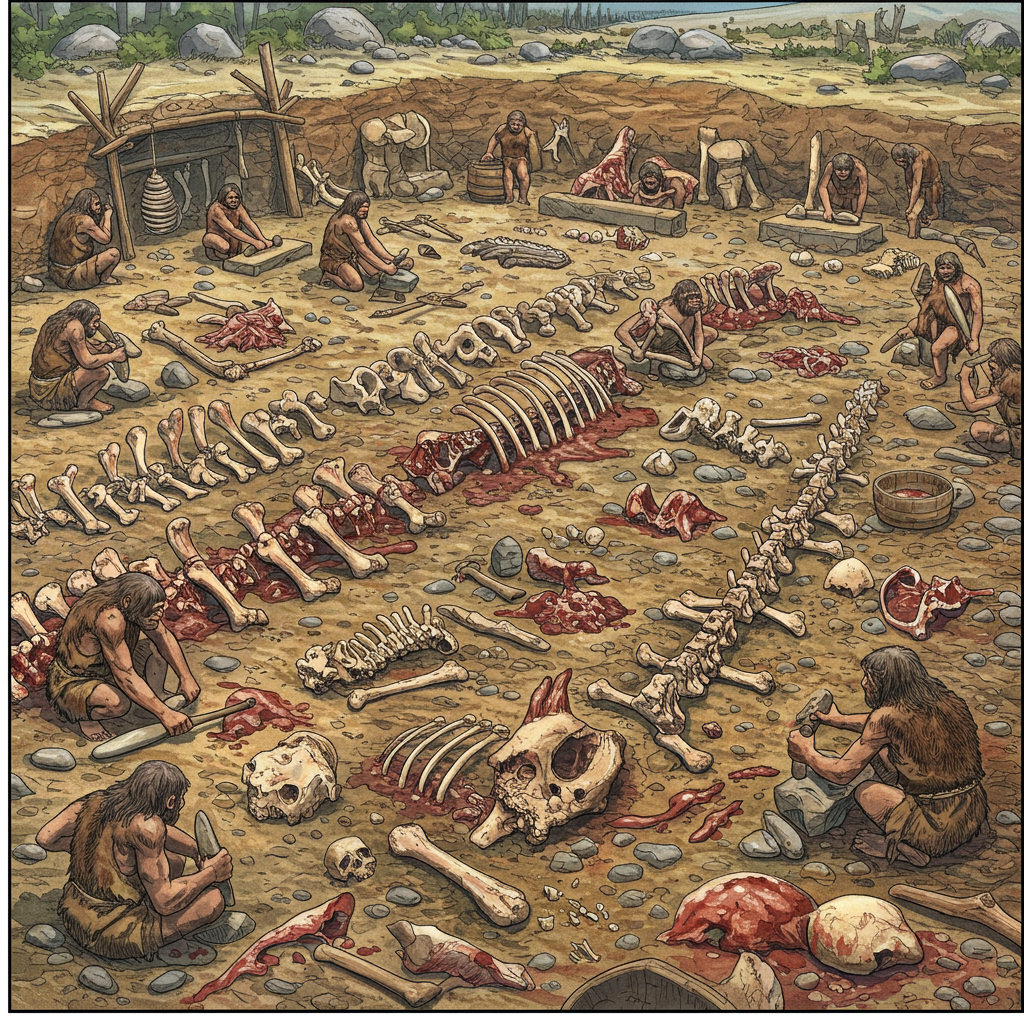Roughly 252 million years ago, Earth experienced its most devastating extinction event on record. Known as the “great Dying” or the Permian-Triassic extinction, this catastrophe annihilated about 90% of all life forms across the planet. Scientists have long understood the initial cause, but what happened next remained a profound mystery. Following the mass die-off, the Earth entered an intensely hot period that shockingly lasted for an astonishing 5 million years. Now, a groundbreaking study using a vast collection of ancient fossils reveals the surprising reason behind this prolonged, lethal heat: the collapse of tropical forests.
Earth’s Worst Mass Extinction: The Great Dying
The Great Dying marks the stark boundary between the Permian and Triassic geological periods. It wasn’t just another extinction; it was the single most catastrophic loss of biodiversity in Earth’s history. While the initial trigger was massive volcanic activity in a region now known as the Siberian Traps, the consequences were far-reaching and complex.
These immense volcanic eruptions spewed colossal volumes of carbon dioxide and other greenhouse gases into the atmosphere. This triggered runaway global warming, leading to severe environmental crises worldwide. Oceans became dangerously acidic, marine ecosystems collapsed, and countless species, both on land and in the seas, simply could not survive the rapid and extreme changes. Five major mass extinctions punctuate our planet’s history, but the Great Dying stands apart due to its sheer scale of destruction.
The Puzzle of the Persistent Heat
Scientists generally agree that the Siberian Traps eruptions initiated the extinction by releasing vast amounts of carbon. However, a significant puzzle remained: why did the planet stay lethally hot for millions of years after the initial volcanic activity waned? The level of sustained warming far exceeded what typical volcanic emissions alone might explain.
Previous theories attempted to solve this riddle by focusing on the oceans. Some suggested that the extreme heat wiped out carbon-absorbing plankton, disrupting the carbon cycle. Others proposed that chemical changes in the ocean water reduced its capacity to store carbon effectively. While these oceanic factors likely played a role, they didn’t fully account for the extreme, long-lasting “super greenhouse” conditions observed in the geological record. The answer, it turns out, may lie not just in the oceans, but on land.
A New Explanation Emerges: The Forest Connection
An international research team, involving scientists from the University of Leeds in England and the China University of Geosciences, pursued a different hypothesis. They suspected the key to the lingering heat lay in a crucial climate tipping point: the widespread death and collapse of Earth’s tropical forests.
The Great Dying is unique among the five major mass extinctions because plant life suffered an unprecedented die-off. “It’s the only one in which the plants all die off,” notes Benjamin Mills, a study author and professor at the University of Leeds. This observation led the researchers to hypothesize that the loss of vegetation fundamentally altered Earth’s climate system in a way not seen in other extinction events.
Digging into the Past: The Fossil Record Holds Clues
To test their theory, the scientists turned to an extraordinary resource: a vast archive of fossil data collected over many decades by three generations of dedicated Chinese geologists. This extensive collection in China provided a unique window into ancient ecosystems.
Researchers meticulously analyzed fossils and rock formations from before, during, and after the Great Dying. These geological clues allowed them to reconstruct detailed maps showing the types and distribution of plants and trees across different parts of the planet during this critical period. Mapping ancient vegetation patterns on this scale was an unprecedented effort, providing unique insights into the ecological changes accompanying the extinction.
The Devastating Impact of Forest Loss on Climate
The results of the fossil mapping project strongly supported the researchers’ hypothesis. The data clearly showed a dramatic and widespread loss of vegetation, particularly tropical forests, coinciding with the peak of the Great Dying. This loss had profound implications for the planet’s carbon cycle – the natural process by which carbon moves between the atmosphere, land, oceans, and living organisms.
Forests act as vital regulators of Earth’s climate. They are powerful carbon sinks, absorbing massive amounts of planet-heating carbon dioxide from the atmosphere and storing it in their wood, leaves, and soil. Trees and plants also play a critical role in a long-term carbon removal process called “silicate weathering.” This chemical reaction involves rainwater interacting with rocks, gradually drawing carbon out of the atmosphere. Plant roots accelerate this process by breaking down rocks and allowing water and air better access.
With the catastrophic death of tropical forests, Earth’s ability to perform these essential climate regulation functions plummeted. “You’re changing the carbon cycle,” explains Professor Mills. Less carbon was absorbed by plants, and the crucial silicate weathering process slowed significantly without plant roots to assist. This meant that the massive amounts of carbon dioxide already released into the atmosphere remained there for an extended period, trapping heat and maintaining the “super greenhouse” conditions for 5 million years.
A Critical Climate Tipping Point
The findings highlight a dangerous “threshold effect,” according to Michael Benton, a paleontology professor at the University of Bristol who was not involved in the study. He notes that the research demonstrates how “the absence of forests really impacts the regular oxygen-carbon cycles and suppresses carbon burial and so high levels of CO2 remain in the atmosphere over prolonged periods.”
Once this threshold is crossed – once forests are lost on a massive, global scale – the damage becomes “irreversible on ecological time scales.” This challenges a common assumption in current climate discussions: that if we control carbon emissions, we can simply reverse the damage. The Great Dying suggests that beyond a certain point, when key natural systems like forests collapse, it becomes incredibly difficult for life and climate to recover, even if the initial stressor is removed.
This is a critical takeaway from the study, according to Mills. It provides a stark warning for the present day. Rapid global warming, driven by human activity, raises concerns that we could push modern tropical rainforests towards a similar collapse. If that happens, the ancient past offers a terrifying preview of the potential consequences.
Even if humanity were to stop all greenhouse gas emissions immediately, losing these crucial ecosystems could potentially accelerate warming instead of allowing the planet to cool.
Frequently Asked Questions
What specifically caused the Great Dying and the subsequent long-term heat?
The initial cause of the Great Dying, Earth’s worst mass extinction, was massive volcanic eruptions in Siberia about 252 million years ago. These eruptions released huge amounts of greenhouse gases like carbon dioxide, causing rapid global warming. However, the new study reveals that the prolonged period of lethal heat for 5 million years after the eruptions was significantly amplified and sustained by the collapse of tropical forests worldwide. The loss of these forests removed a critical natural mechanism for absorbing and removing carbon from the atmosphere.
Where did scientists find the key fossil evidence for this study?
The crucial fossil data that helped scientists understand why the heat persisted after the Great Dying came from a vast archive located in China. This collection represents decades of work by multiple generations of Chinese geologists. By analyzing these fossils and the surrounding rock layers, the research team was able to reconstruct detailed maps of ancient plant life before, during, and after the Permian extinction, revealing the catastrophic loss of tropical forests.
What does the Great Dying event tell us about modern climate change risks?
The Great Dying offers a dire warning about the potential consequences of climate change today, particularly regarding the stability of tropical forests. The study highlights that losing these forests can push the climate system past a critical “tipping point.” Beyond this threshold, natural carbon cycles are severely disrupted, leading to prolonged periods of high atmospheric carbon dioxide and extreme heat that are difficult to reverse, even if emissions decrease. It underscores the danger of pushing ecosystems to collapse.
A Stark Warning for Today
While the findings paint a sobering picture, there might be a glimmer of hope. The scientists suggest that modern tropical rainforests might be more resilient to high temperatures than their ancient Permian counterparts. This is an area they are now investigating.
Nevertheless, the primary message from the Great Dying study remains a stark warning. As Professor Mills states, “There is a tipping point there. If you warm tropical forests too much, then we have a very good record of what happens. And it’s extremely bad.” Understanding how the loss of forests contributed to Earth’s most severe heating event serves as a crucial reminder of the delicate balance of our planet’s climate system and the potential for catastrophic, long-lasting consequences if we push it too far.




